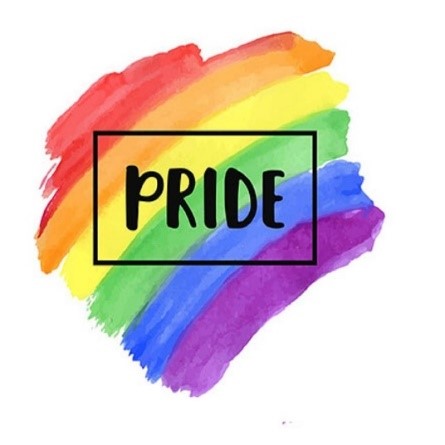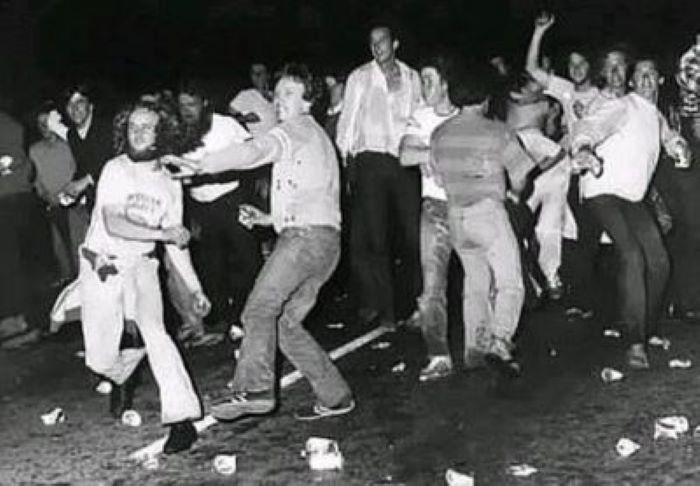
As we celebrate Pride month, UCOH presents the final installment of a blog post series by author and UCOH Rainbow Ambassador Charles Davis. Charles presents the evolution of attitudes regarding LGBTQIA+ individuals and early attempts to achieve equality. Read on…
The Stonewall Inn and the Beginning of the Modern Equality Movement, Part 4
By Charles Davis, UCOH Rainbow Ambassador
Unity Principle #3: We are co-creators with God, creating reality through thoughts held in mind.
In our last installment, we discussed how, in the 20th Century, America adopted an “us versus” them perspective. This created a system of “haves” and “have nots” in our society. In this, our fourth and last installment of this series, we will consider how our “co-creator” ability can create the world we truly want, one of harmony, peace and plenty for all of humanity . . . but we have to watch what we “wish” for.

Prior to the events at the Stonewall Inn on June 28, 1969, LGBTQIA+ people unconsciously saw themselves as “less than” or “unworthy.” They lived in the shadows, believing that as long as they kept to themselves or were able to appear “normal” around other people, they would be safe.
However, after that sweltering night in June of 1969, LGBTQIA+ people began to awaken to the reality that they, too, are beloved children of God, and every bit as worthy as anyone else of respect, dignity and equality of a life well lived. This new world they envisioned became the focus of their lives and through baby steps they brought that world into reality.
The Stonewall Uprising was not the beginning of the equality movement as discussed in our previous segment, but it resulted not only in the formation of several LGBTQIA+ organizations such as the Gay Liberation Front, Human Rights Campaign, GLAAD, and PFLAG, but also led eventually to legalization of same gender sexual relations and the ability to marry. The ability to adopt and raise children is still determined on a state by state basis at this time.
For the first time, the queer community (this is a term commonly embraced by the LGBTQIA+ community today*) was no longer accepting their status in society as a people forced to hide in the shadows or pretend to be something they were not. Instead, they saw themselves as vibrant human beings, equal in God’s eyes and worthy of the respect and dignity bestowed upon their cis-brothers and sisters. They saw a world that now, over 50 years later, has finally come to pass.
In the 60’s, gay behavior in public (holding hands, kissing or dancing with someone of the same sex) was still illegal. There were few places the LGBTQIA+ community could be themselves. In New York City, the Genovese crime family saw a financial opportunity and began to buy up older, worn down “straight” bars in the area and then reopened them after only perfunctory “renovations” as establishments catering to the LGBTQIA+ community.

By 1966, it was no longer illegal to serve alcohol in these bars, but as with most of the bars run by the Mafia, the Stonewall Inn was a “bottle bar”, meaning that “club members” supposedly brought their own alcohol and the bar did not have a liquor license. Of course, the Stonewall continued to sell their own alcohol anyway. The Mafia routinely bribed local police to be notified of any upcoming “raids” so that they would have time to remove all alcohol and hide any other illegal activities before the police got there.

In the early morning hours of June 28, 1969, however, New York police raided the Stonewall Inn without notifying them in advance. The bar had just had a similar “announced” visit a few days earlier, so the visit on the night of the 28th was a complete surprise and the bar was packed.
Police poured into the establishment and immediately began shoving patrons to the side. Finding bootlegged alcohol along with numerous same-sex dance partners, they ended up arresting a total of 13 people, including employees of the bar and several people violating the state’s gender-appropriate clothing statute. They forced all other patrons out onto the street and closed the bar down. However, rather than disperse, the crowd hung around, becoming increasingly agitated as they watched police shoving their friends roughly into awaiting police vans.
At one point, a lesbian being arrested, reportedly Storme DeLarverie, complained that her handcuffs were too tight. Rather than loosen them, the officer told her to shut up and roughly shoved her into the police van, hitting her head in the process. She screamed in pain and shouted for the onlookers to “do something”. Suddenly, something snapped in the minds of the crowd. Years of submission to the status quo were forgotten as they began picking up and throwing bottles, rocks and anything else they could find at the police.


Eventually the disturbance subsided, but demonstrations at the Stonewall Inn and surrounding locations continued for another five nights.
On the event’s one-year anniversary, known at that time as the “Christopher Street Liberation Day”, thousands of people marched from the Stonewall Inn to Central Park in remembrance of the event, becoming America’s first Pride Parade. The official chant of the parade was “Say it loud, gay is proud!”

After Stonewall, the queer community refused to “go back in the closet” and became much more visible to people who thought they had never known any of “those people”. Suddenly, they found out their co-worker was gay; that nice woman at the beauty shop was a lesbian; “Uncle Frank” had been gay all this time, but no one in the family ever talked about that. Gradually, American society became much more comfortable with queer culture and realized they were not the threat they had always considered them to be.
In 1982, Wisconsin became the first state to outlaw discrimination in housing and employment on the basis of sexual orientation, followed slowly by similar measures across the nation. High Tech was at the vanguard of corporate acceptance of the queer community, but other companies soon followed suit.
Everything seemed to be heading toward a bright new future for LGBTQIA+ people, but there were still difficult periods. The two most significant setbacks were both during the tenure of the first American President to ever run for office with the overwhelming support of the LGBTQIA+ community. Bill Clinton had run on a platform of allowing gay men and lesbians to serve openly in the military, but he faced strong opposition from Congress, both Republican and Democrat, and ultimately had to agree to a compromise measure called “Don’t Ask, Don’t Tell”. Queer servicemen and women were allowed to serve in the military as long as they kept their sexual orientation secret. Of course, they had already been serving in the armed forces this way for years. The LGBTQIA+ community saw this as simply giving a name to the way they had been forced to live all their lives and it was not received well.
Three years later, Clinton signed an even more distasteful law, the Defense of Marriage Act (DOMA), which defined marriage as a legal union between one man and one woman and specified that no state could recognize a same-sex marriage from out of state. This was one more slap in the face to people who had so strongly supported his candidacy and it set the same-sex marriage effort back years. But public opinions were changing, and ultimately, Massachusetts was the first state to legalize gay marriage in 2004, followed by New Hampshire, Vermont, Connecticut, Iowa, California, New York and Washington,D.C. In 2011, President Obama stated that his administration would no longer defend DOMA.
On June 26, 2003, the U.S. Supreme Court ruled that sodomy laws in America were unconstitutional (Lawrence v. Texas), making queer Americans legal for the first time in history. On June 26, 2015, they further declared that same-sex marriage was legal in all 50 states (Oberfell v. Hodges).


For the first time in history, LGBTQIA+ people could live openly and freely (“Out and Proud). To be sure, there are significant challenges that still await us, but we will face them the same way we have faced all obstacles – with love and an unfailingly positive view of the world we want to live in.
What we envision, we create!
*[Note on language: Language is fluid and ever evolving. Terminology and usages change from era to era, culture to culture, and even person to person. While we have endeavored to use terminology that is respectful to the individuals and communities mentioned in this series, some of the language may be considered offensive or problematic today or in the future. For example, the use of “queer” in this article. This term was, in the days of Stonewall, an unpleasant slur that was thrown in our faces to embarrass and demean us. Today, this word has been reclaimed by the LGBTQIA+ community as an umbrella term to mean anyone who is not exclusively heterosexual. For some younger people, the terms lesbian, gay and bisexual are too limiting or have cultural connotations that do not apply to them (https://www.them.us/video/watch/what-does-queer-mean-inquiry ). When trying to decide what language to use, it is important to follow the lead of individuals and communities, listening to current best practices. GLAAD’s Media Reference Guide (https://www.GLAAD.org/reference/terms ) is a great resource for this. We welcome feedback, comments, questions, and constructive criticism, so if you see anything that could use updating, please let the author know and we will take your concerns into consideration. Contact: Charles Davis, cdavis114@icloud.com]